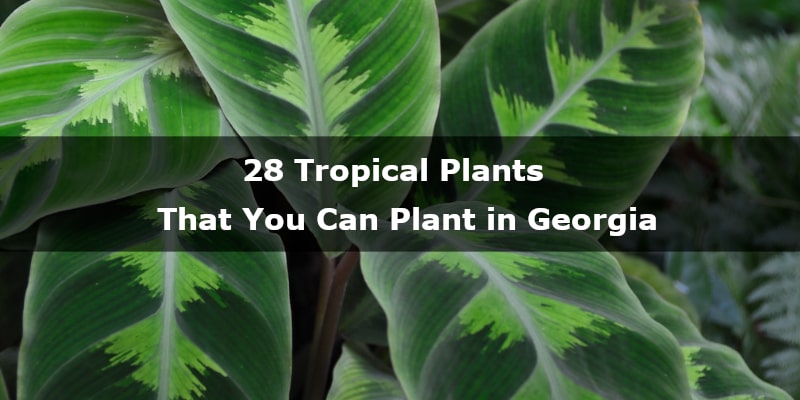Planting a tropical plant is possible in Georgia.
Doesn’t matter if you want to create a tropical yard, or add some tropical taste. In this article, you will find the best tropical plant ideas that are easy to grow in Atlanta, Columbus, August, or any other place in this state.
Is it Hard to Grow a Tropical Plant in Georgia?
Planting a tropical plant in Georgia isn’t hard, because this state has a good enough climate to grow tropical plants that can survive the winter even outdoors.
Tropical plants like hot weather. In Georgia, in summer, the temperatures are in the average low of 80 degrees F (26° C) and an average high of 95 degrees F (35 °C). Moreover, summer days in Georgia commonly include afternoon rain showers. Tropical plants love it, and they thrive in summers with such weather conditions.
Most people are afraid that tropical plants won’t survive winters in Georgia. Tropical plants, however, can bear temperatures as low as 50 degrees F (10 °C). In the winter, the average temperatures in Georgia tend to be between 50 and 60 °F (10-15 °C), so this kind of temperature doesn’t kill tropical plants.
However, the climate is changing, and some winter days can be colder than average, and some tropical plants won’t survive frost. Because of that, to make this list, I’ve chosen only hardy tropical plants. Some of them will survive even temperatures as low as -20 degrees F (-28 °C), so you can grow them in Georgia without any problems.
Giant Taro
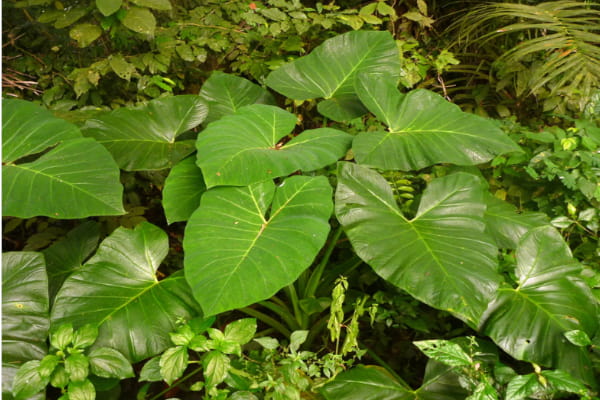
Giant Taro is an evergreen perennial with gigantic leaves. It can grow up to 12-15 ft. (360-450 cm) high, and 6-8 ft.(180-240 cm) wide. It’s native to Sri Lanka, India, Southeast Asia, and Indonesia. Performs best in part shade, in rich, moist to wet soil.
Cold tolerance: 46 °F (8 °C)
USDA Zones: 9-11
Pindo Palm
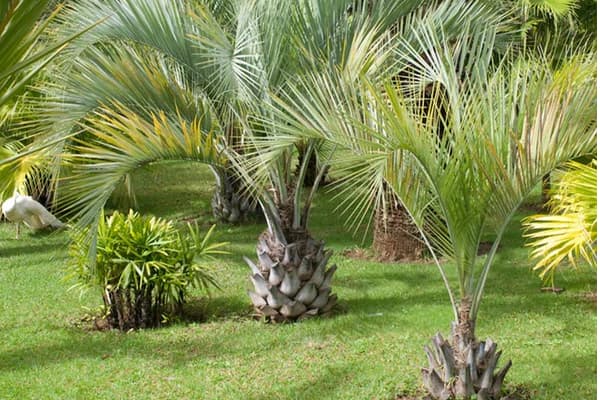
Pindo Palm is a slow-growing, evergreen palm with solitary trunk crowned with blue-green to gray-green leaves that curve in towards the trunk. It can grow up to 20 ft. (6 meters). Pindo Palm loves full sun or part shade. It grows originally in Argentina, Brazil, and Uruguay.
Cold tolerance: 12 °F (-11 °C)
USDA Zones: 9-11
Silver Trumpet Tree
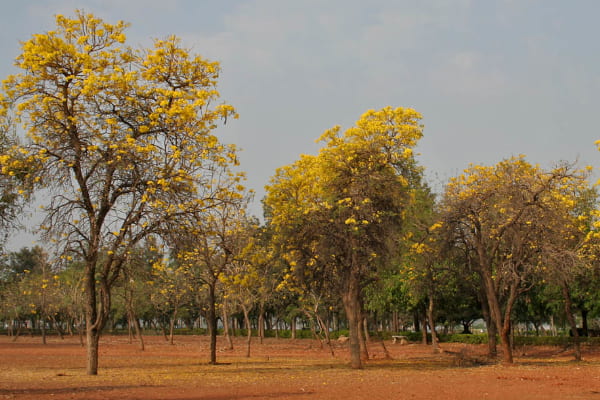
This tree is native to Brazil. It starts blooming in the spring. It contains thousands of yellow trumpet flowers that catch attention. A newly planted tree takes several years to stabilize root strength. You should plant a Silver Trumpet Tree in full sun, and well-drained soil.
Cold tolerance: 26 °F (-3 °C)
USDA Zones: 9b-11
Japanese Banana
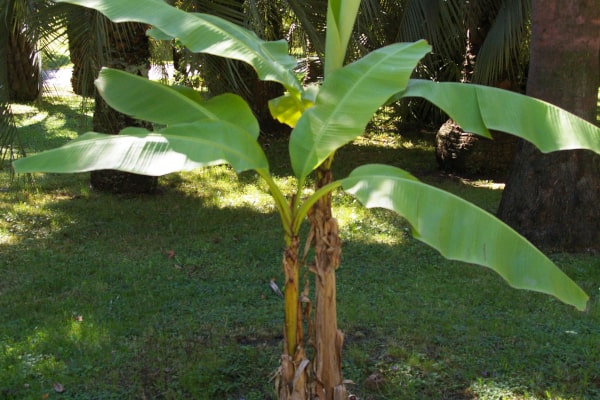
Japanese Banana, also called Musa Bajsoo, is a fast-growing, evergreen perennial with huge, arching paddle-shaped leaves, up to 10 ft. (3 m) long. The plant can be as big as 15 ft. (450 cm). Plant it in a place that’s fully sunny. Although it’s called the Japanese Banana, it originated in China.
Cold tolerance: -10 °F (-23 °C)
USDA Zones: 5-10
Hardy Hibiscus
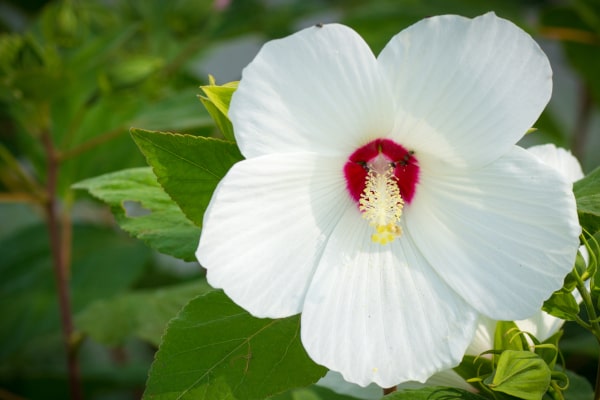
Do you want a plant that’s tall, shrubby, and with hollyhock-like flowers? Hibiscus Moscheutos will keep everyone’s attention thanks to its white, rose, or pink flowers. It’s blooming from midsummer to early fall. It’s highly tolerant to heat and humidity.
Cold tolerance: -10 °F (-23 °C)
USDA Zones: 5-9
Papaya
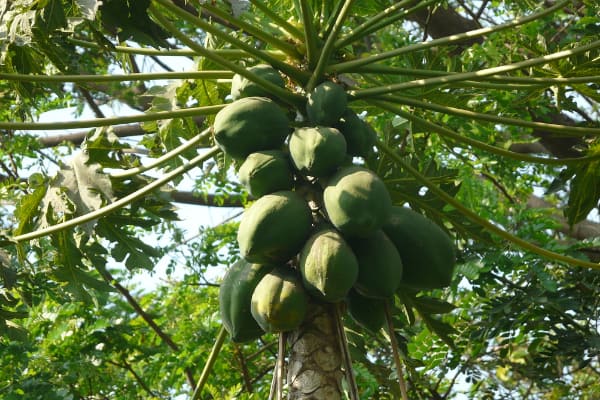
Papaya is native to Central America. This large, short-lived perennial plant with a single trunk can reach up to 30 feet (9 m.) at maturity. Papayas like well-drained soil, and because of shallow roots, growing papaya trees will not tolerate wet conditions.
Cold tolerance: 31 °F (-0,6 °C)
USDA Zones: 9-11
Bamboo
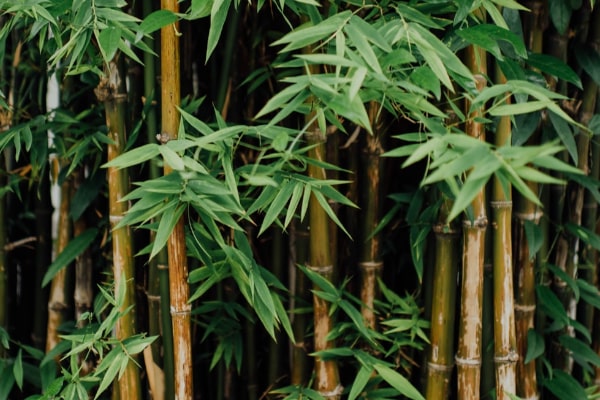
A bamboo plant is quite popular in the US. It’s easy and simple in growing and caring for. Bamboo grows best in full sun. Bamboo plants also like to have fertile, slightly acidic, well-drained but moist soil.
Cold tolerance: 18 °F (-7 °C)
USDA Zones: 6b-10
Sabal Minor
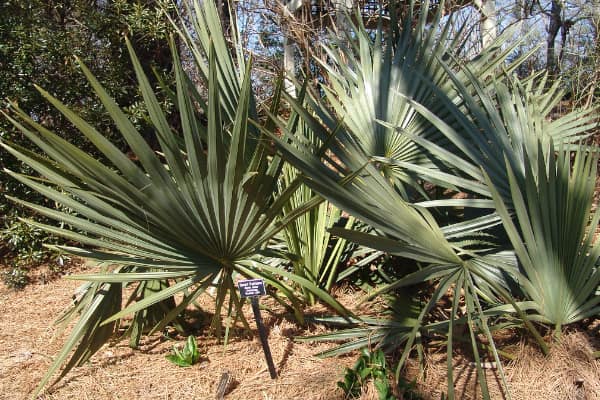
Sabal Minor is native to southern states, including Georgia. It’s one of the hardiest palms, usually trunkless, but sometimes with a small trunk. Dwarf Palmetto brings a handsome foliage mass to the landscape and can be used as a textural accent.
Cold tolerance: 0 °F (-17 °C)
USDA Zones: 7-10
Croton
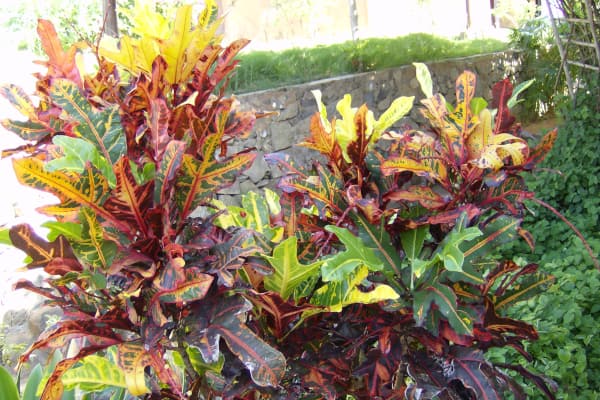
Croton is known for its lush leaves with brightly colored leaves. It is native to India, Sri Lanka, Malaysia, and Pacific Islands. It’s a sturdy, low-maintenance perennial that can be grown indoors, and outdoors.
Cold tolerance: 32 °F (0 °C)
USDA Zones: 9-11
Needle Palm
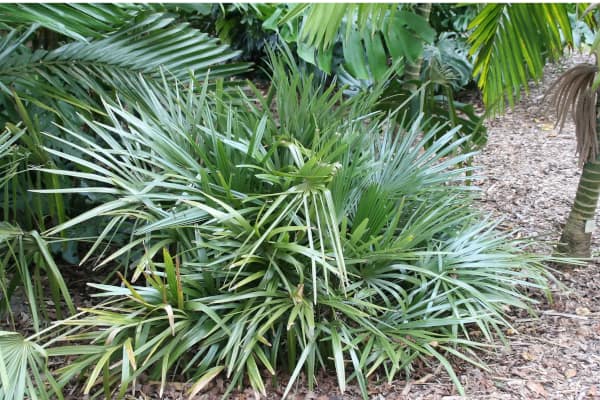
Also known as Rhapidophyllum Hystrix is one of the hardiest palms. It’s a shrubby, rounded, evergreen palm with a short, thick trunk. Grows up to 6 ft. (180 cm) tall. Prefers full sun or part shade.
Cold tolerance: -15 °F (-26 °C)
USDA Zones: 5b-11
African Lily
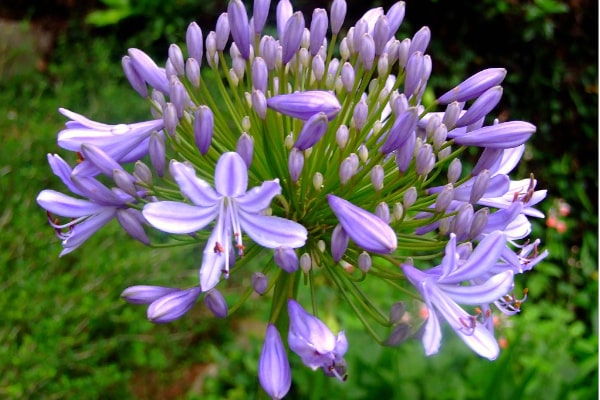
A lovely African Lily has showy rounded clusters of fragrant, blue funnel-shaped flowers that bloom from early to mid-summer. Thrives in full sun. The plant looks very exotic and is native to South Africa.
Cold tolerance: 40 °F (4 °C)
USDA Zones: 8-10
Bougainvillea
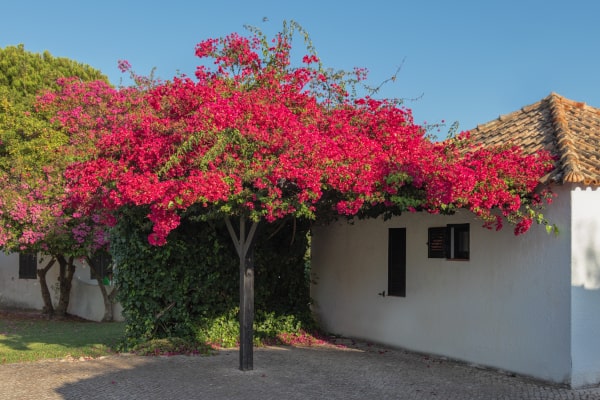
Bougainvillea is one of the showiest vines that you can grow. This shrub is evergreen with abundant clusters of bright papery bracts in bold shades of pink, magenta, purple, red, orange, or yellow.
Cold tolerance: 32 °F (0 °C)
USDA Zones: 9-11
Yucca
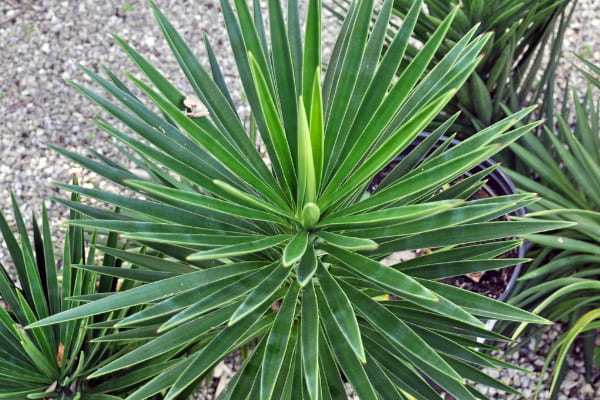
Yucca, especially Green Desert Spoon is an evergreen succulent boasting a perfectly rounded rosette. The leaves can reach 3 ft. (90 cm) in length. Yucca is native to Mexico, and Guatemala. It thrives in full sun and is drought tolerant.
Cold tolerance: 10 °F (-12 °C)
USDA Zones: 8-10
Japanese Silver Grass
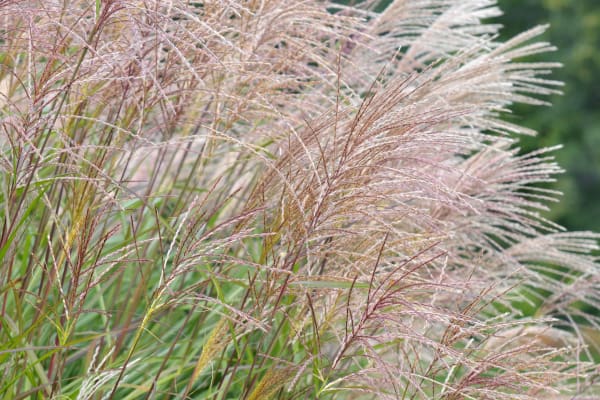
If you’re looking for something different from tropical flowers and palms, you can grow Japanese Silver Grass. It will add more drama and powerful structure to your yard. Dwarf varieties are 32 in. (80 cm), and bigger ones are even up to 8 ft (240 cm) long.
Cold tolerance: -5 °F (-20 °C)
USDA Zones: 5-9
Pineapple Lily
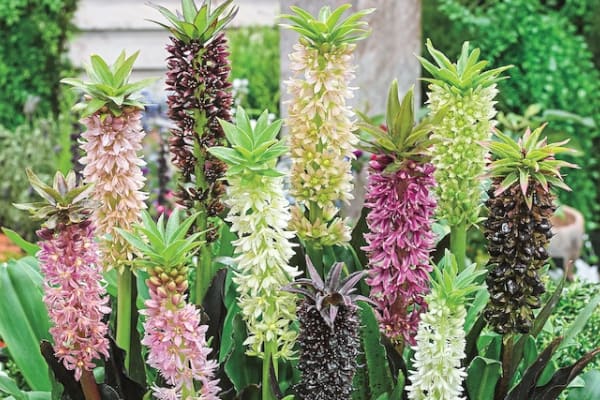
Looks similar to pineapple fruit. It’s a beautiful and exotic flower, blooming in late summer and fall. Rich of nectar, the flowers last from 6 to 8 weeks. It requires mulch coverage in the winter. Pineapple Lily is native to South Africa.
Cold tolerance: 40 °F (4 °C)
USDA Zones: 7-10
Rice Paper Plant
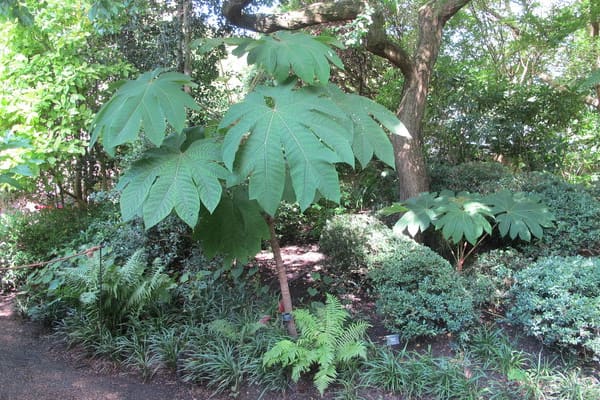
Rice Paper Plant is an evergreen shrub native to Taiwan. It makes a lush, exotic background for borders and screening. It accepts a wide range of soil conditions but does spread by underground rhizomes which will need to be cut and removed to limit this plant’s spread.
Cold tolerance: 20 °F (-6 °C)
USDA Zones: 6-10
Windmill Palm
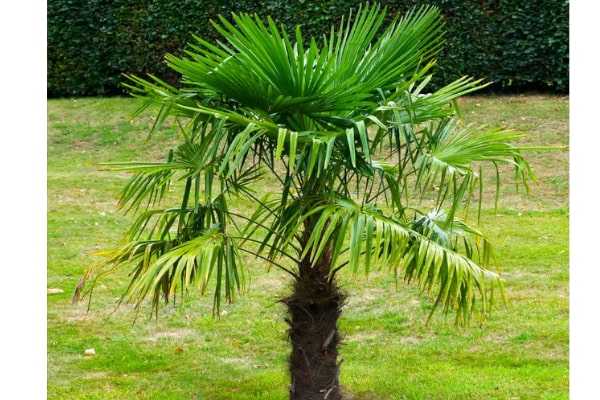
Windmill Palm, also called Chinese Windmill Palm is a hardy plant forming a small tree with a terminal tuft of divided dark green leaves. It can grow up to 10 ft. (3 meters). Great for containers, beds, and borders.
Cold tolerance: 10 °F (-12 °C)
USDA Zones: 7-11
Fig Tree
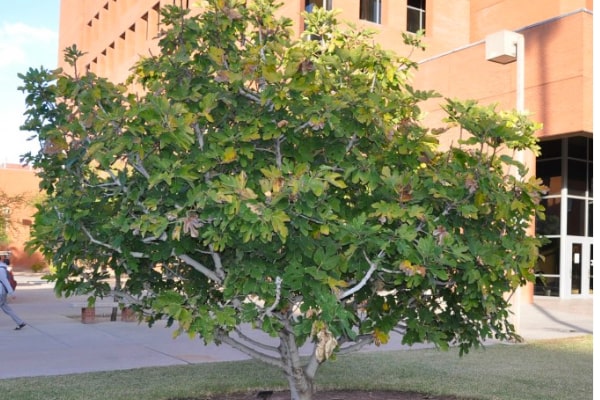
Fig Tree can be a small tree or a shrub with a spreading crown clothed in lobed leaves. The tree is native to Western Asia, and Mediterranean regions. As the figs mature, you’ll need to harvest them daily.
Cold tolerance: 15 °F (-9 °C)
USDA Zones: 6-9
Ferns
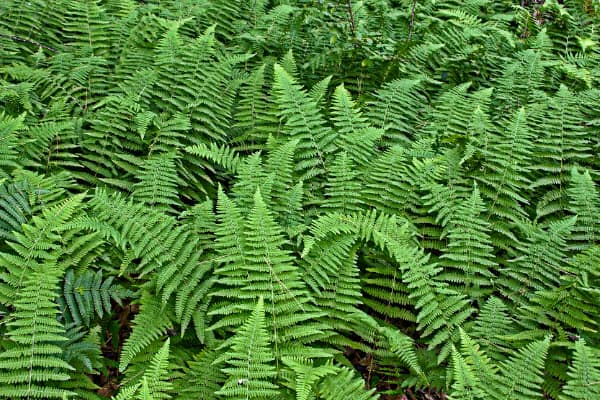
Ferns are incredibly easy to grow. They will add beauty to any spot in your yard. They grow slowly and might become mature after a few years. They require almost no maintenance, besides occasional watering.
Cold tolerance: 30 °F (-1 °C)
USDA Zones: 4-8
Agave
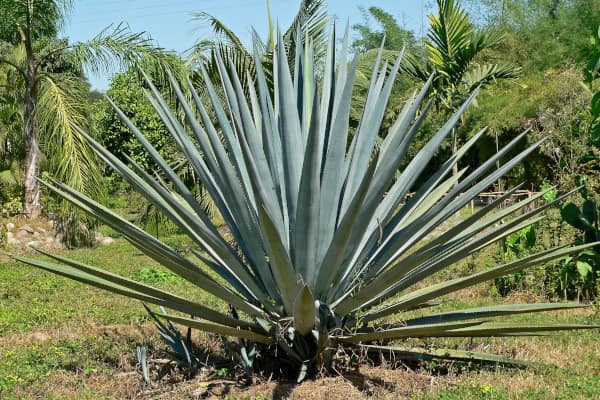
Agaves will add a tropical look to any yard. They’re extremely easy to care, and waterwise. They should be grown in full sun, and prefer rather hot weather. Great for rock yards, or coastal yards.
Cold tolerance: -20 °F (-28 °C)
USDA Zones: 5-11
Opuntia
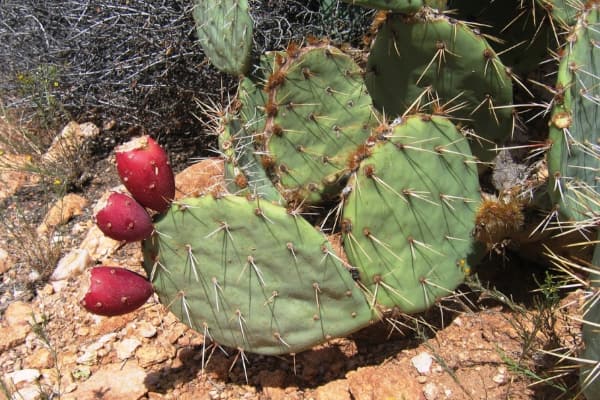
Opuntia is a branched, jointed cacti with flat, broad joints. Usually densely spined. Its fruits are often edible. This plant is native to West Indies, but also to America.
Cold tolerance: 20 °F (-6 °C)
USDA Zones: 9-11
Elephant Ears
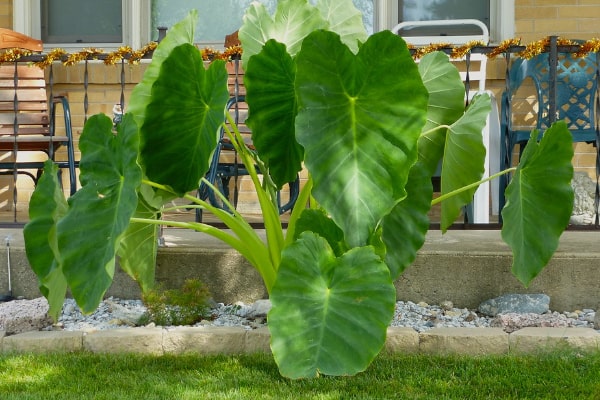
Elephant Ears is a tender perennial with enormous ruffled green leaves. They are arrow-shaped at their bases and stand upright. The plant can grow up to 8 ft. (240 cm). Elephant Ears quickly give a touch of the tropics.
Cold tolerance: 38 °F (3 °C)
USDA Zones: 8-11
Southern Magnolia
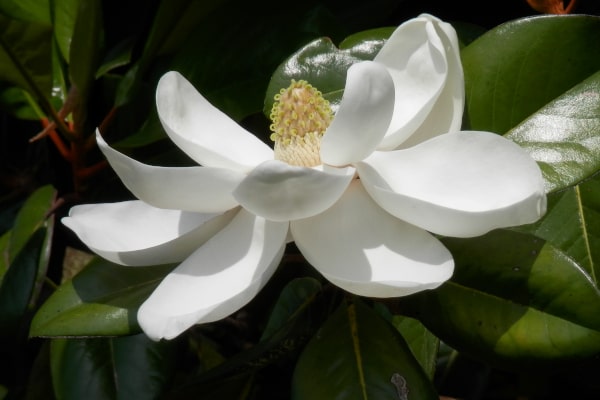
Southern Magnolia is a magnificent, evergreen tree with a straight trunk and rounded crown. It’s powerfully fragrant. Can be grown in full sun, or in part shade. Can grow up to 24 ft. (24 m) tall, but it’s pretty rare.
Cold tolerance: 20 °F (-6 °C)
USDA Zones: 7-10
Bengal Tiger Canna
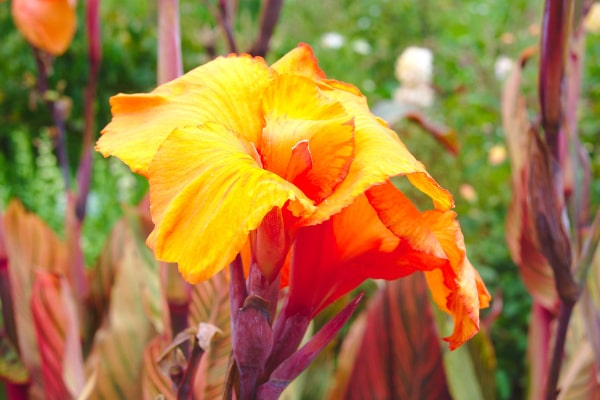
It’s known for its large, vivid orange flowers and crumpled appearance. Blooming from mid-summer to fall. Spectacular on a patio, good for container growing. Provide a strong ornamental interest.
Cold tolerance: 0 °F (-17 °C)
USDA Zones: 7-11
Butterfly Ginger
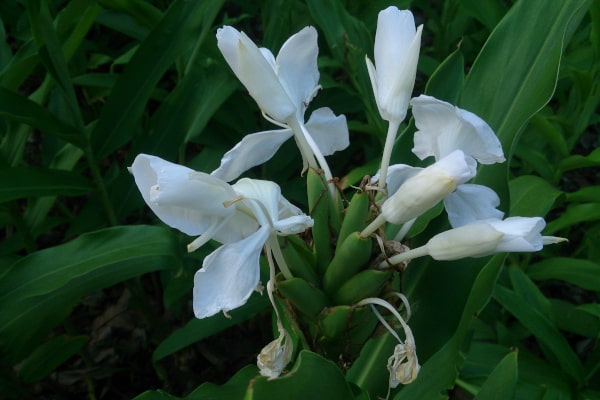
White Ginger Lily is a perennial, boasting intense, luxurious fragrance. During a 6-week bloom period, several hundreds of flowers might appear, usually in late summer or early fall. Native to India, Nepal, and Bhutan.
Cold tolerance: 10 °F (-12 °C)
USDA Zones: 7-10
Gunnera
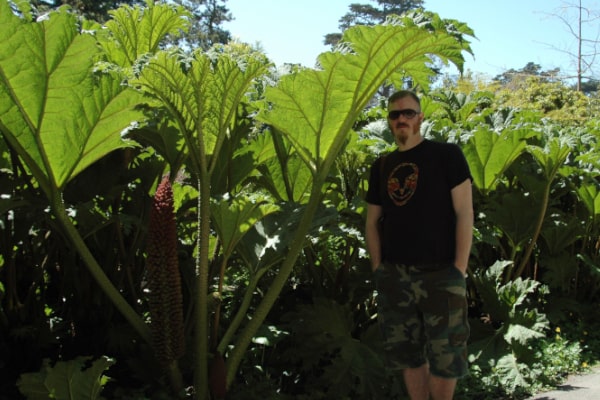
Also known as Giant Rhubarb. It’s a large, herbaceous clump-forming perennial grown for its gigantic deep green leaves up to 6 ft. (180 cm) across. It’s native to Brazil, and it’s very easy to grow.
Cold tolerance: 10 °F (-12 °C)
USDA Zones: 7-10
Sugar Cane
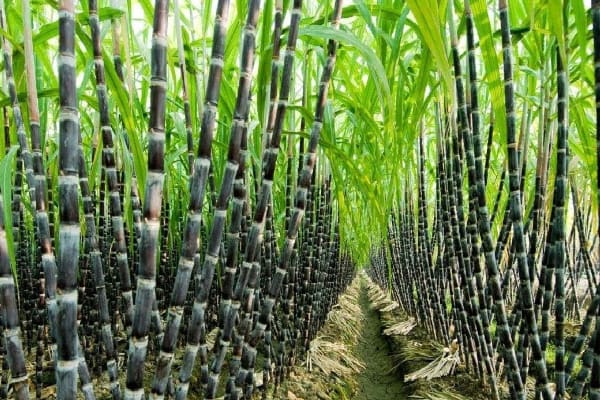
It’s a tall clump-forming perennial grass with long stems filled with sweet sap. It’s good not only for consumption, but also as an ornament. Good for containers.
Cold tolerance: 50 °F (10 °C)
USDA Zones: 6-10
Hosta
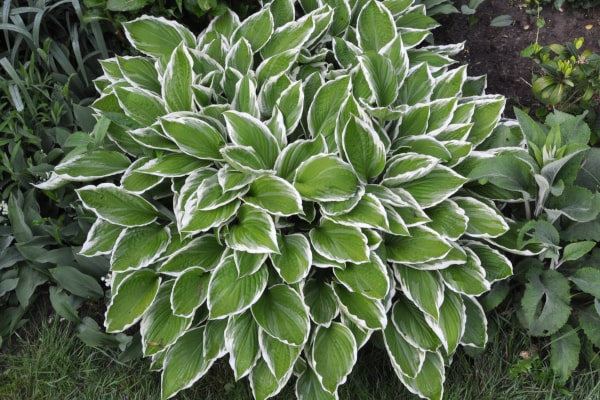
Hosta is great if you’re looking for something that is easy to grow. This perennial loves shade, it’s elegant, and with attractive foliage. Native to eastern Asia.
Sources
study.com, gardenia.net, toptropicals.com, gardeningknowhow.com, marthastewart.com, plants.ces.ncsu.edu, thespruce.com

